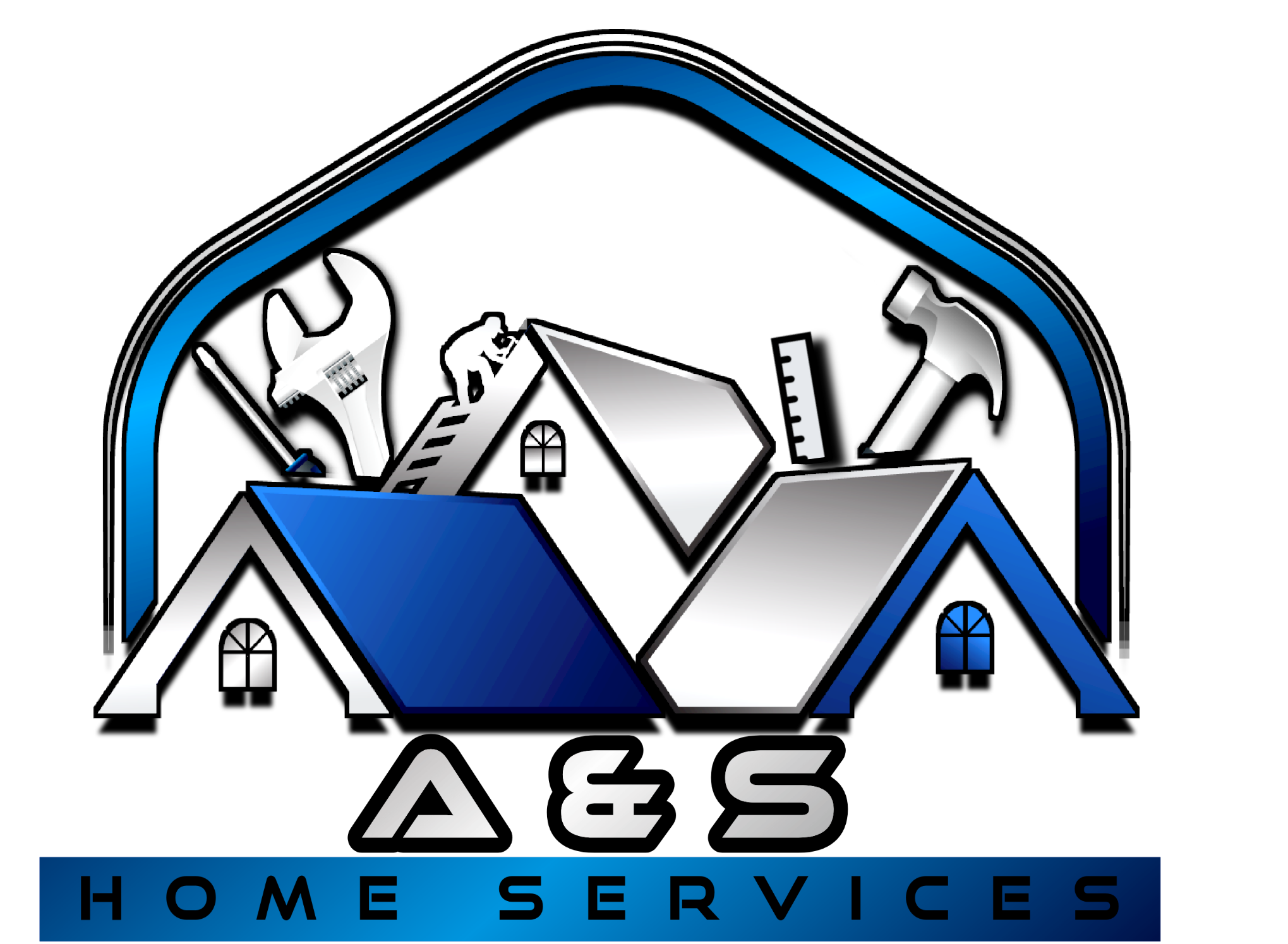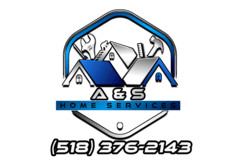Mildew Prevention for First-Time Albany Homeowners: Smart Ventilation, Dehumidifiers, and Sealants That Work With Handyman Services Near Me

For first-time homeowners in Albany, NY, a clean, dry home is more than comfort—it’s protection for your biggest investment. Mildew thrives where moisture lingers, especially in Upstate basements, attics, and bathrooms. The good news: with smart ventilation, the right dehumidifier, and targeted sealants, you can stop mildew before it starts. And if you prefer professional help, A&S Home Services can evaluate problem areas and implement practical fixes fast with handyman services near me.
Mildew 101: What It Is—and Why Albany Homes Are Prone
Mildew is a surface fungus that shows up as gray, black, or white speckling on walls, ceilings, tile grout, wood, and fabrics. It loves moisture, warmth, and stagnant air—all common in Upstate New York’s humid summers and tightly closed winter homes. Unlike deep, structural mold problems that require remediation, mildew prevention is largely about managing moisture and airflow.
Common Albany triggers include:
- High summer humidity and damp basements
- Poor bathroom and kitchen ventilation (or fans vented into attics)
- Attic condensation from blocked soffits or inadequate ridge ventilation
- Leaky plumbing or unsealed tub/shower surrounds
- Freeze-thaw cycles that open foundation hairline cracks
The Science of Moisture: Target Humidity and Airflow
Keep indoor relative humidity (RH) between 35%–50%. Below 35%, wood dries and cracks; above 50%, mildew risk climbs. Air movement is equally critical: moving air limits condensation and dries surfaces.
How to measure and monitor
- Place hygrometers in basements, bathrooms, laundry rooms, and attics.
- Log RH weekly for the first month to spot patterns.
- Adjust fan runtimes and dehumidifier settings to maintain 35%–50% RH.
Infographic: Humidity vs. Mildew Risk
Humidity vs Mildew Risk in a Typical Albany Home
Aim for 35%–50% RH year-round. If you’re consistently over 55%, increase exhaust ventilation and run a dehumidifier long enough to reach your target.
Ventilation That Works in Albany Homes

Ventilation removes moist, stale air and replaces it with dry, fresh air. Focus on rooms that add the most moisture: bathrooms, kitchens, and laundry rooms. In winter, balanced airflow also curbs condensation on windows and attic sheathing.
Bathrooms: Sized fans and proper ducting
- Fan sizing: Minimum 1 CFM per square foot of bathroom (e.g., 80 CFM for an 8’×10′). Larger or enclosed showers may need more.
- Run-time: Use a humidity sensor or timer; run 20–30 minutes after showers.
- Ducting: Vent outside, not into the attic. Use smooth-wall ducting and a tight, insulated exterior cap.
- Sealing: Caulk tub/shower surrounds and re-grout as needed to prevent water migration behind tile.
Kitchens: Capture-and-exhaust
- Range hoods: Duct outside; avoid recirculating-only units. Use during cooking and 10 minutes after.
- Make-up air: In tightly sealed homes, slightly open a nearby window or ensure a make-up air path.
Laundry rooms: Hidden humidity
- Dryer venting: Rigid metal duct to exterior, shortest route, no interior vent boxes.
- Floor drains/sumps: Seal lids and maintain to reduce moisture escape.
Attics: Stop condensation at the source
- Soffit + ridge = best combo: Clear soffit vents and ensure continuous ridge ventilation.
- Baffles: Install at eaves to keep insulation from blocking airflow.
- Bath/kitchen ducts: Terminate through roof/wall with insulated ducts to prevent winter frost and drip-back.
If you’re unsure how to size fans or reroute ductwork, a quick search for handyman services near me can connect you with a local pro who can assess and install proper ventilation without guesswork.
Dehumidifiers: Sizing, Placement, and Routine

Dehumidifiers remove water from the air and are essential for basements or whole-home moisture control—especially after rainy weeks or during late-summer humidity spikes.
Pick the right capacity
- Small spaces (up to ~500 sq. ft.): 20–30 pint/day unit
- Typical basements (600–1,200 sq. ft.): 35–50 pint/day
- Large or persistently damp basements (1,200+ sq. ft.): 50–70 pint/day
Placement and drainage
- Place centrally with at least 12–18 inches clearance for intake/exhaust.
- Continuous drain: Run a hose to a floor drain, sink, or condensate pump to avoid daily bucket emptying.
- Keep doors ajar to improve air circulation across rooms.
Settings and maintenance
- Set target RH to 45%–50% for basements.
- Clean filters monthly during heavy use.
- Vacuum coils/grilles to maintain airflow and efficiency.
Sealants, Caulks, and Waterproofing That Actually Help
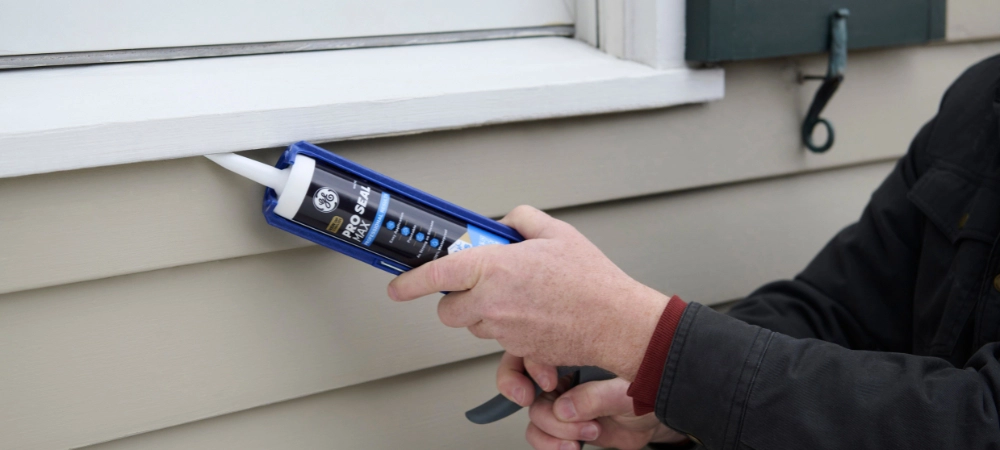
Sealants don’t “cure” moisture, but they block intrusion and seepage so ventilation and dehumidification can do their jobs. Think of sealants as your home’s raincoat and ventilation as the wind that dries it.
Where to seal
- Bathrooms: Re-caulk tub-to-tile, shower doors, and sink rims; re-grout cracked grout lines.
- Kitchens: Caulk backsplashes, sink rims, and penetrations under sinks.
- Basements: Seal foundation hairline cracks and apply masonry waterproofers on interior walls where minor dampness appears.
- Exterior penetrations: Seal gaps around vents, hose bibs, and utility entries; weatherstrip doors and windows.
Which products where
- 100% silicone: Best for wet areas like tub/shower; flexible and mold-resistant.
- Polyurethane sealants: Durable exterior use around siding/penetrations; paintable after curing.
- Acrylic latex (with silicone): Interior trim/painted joints; easy clean-up.
- Masonry waterproofers: For damp basement walls; pair with grading/gutter fixes outdoors.
Albany Hot Spots: Attics, Basements, Bathrooms, and Entryways
Attics
- Look for dark spots on roof sheathing or rusty nails (condensation sign).
- Clear soffits, add baffles, and ensure bath fan ducts exit outdoors.
- Air-seal attic penetrations (light fixtures, plumbing stacks) before adding insulation.
Basements
- Grade soil away from foundation; add downspout extensions (6–10 feet).
- Run a dehumidifier with continuous drain; keep RH at 45%–50%.
- Seal hairline wall/floor cracks; monitor for new seepage after storms.
- Learn more about typical fixes in this guide to basement repairs.
Bathrooms
- Install a properly sized, quiet exhaust fan with a humidity sensor.
- Squeegee shower walls/doors after use; run the fan 20–30 minutes post-shower.
- Re-caulk annually or at first sign of cracking, shrinking, or discoloration.
Entryways and mudrooms
- Use washable rugs; hang wet coats to dry away from walls.
- Place boot trays to contain melted snow and road salt.
- Wipe walls/trim seasonally and touch up paint to maintain a sealed surface.
Seasonal Mildew Prevention Calendar for Upstate NY
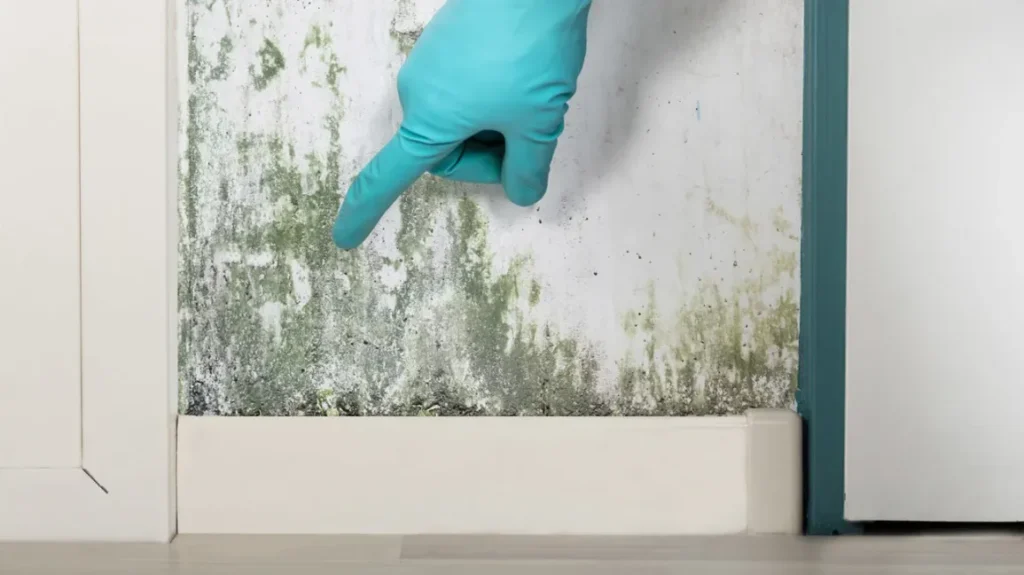
Spring
- Clean gutters and confirm downspouts drain well away from the foundation.
- Check attic for winter condensation stains and correct ventilation blockages.
- Test bathroom and kitchen exhaust fans for airflow.
Summer
- Run dehumidifiers; maintain 45%–50% RH in basements.
- Use kitchen range hood while cooking; ventilate laundry.
- Re-grout/caulk high-use bathrooms before peak humidity.
Fall
- Inspect weatherstripping; seal exterior penetrations.
- Confirm soffit and ridge vents are clear before heating season.
- Review storm-readiness to prevent wind-driven rain intrusions. For a broader preparedness plan, see our Upstate NY storm-proofing guide.
Winter
- Use bath/kitchen fans to control condensation on windows and cold surfaces.
- Keep interior doors open to balance humidity across rooms.
- Watch for attic frost after cold snaps; address air leaks and ventilation.
Step-by-Step Mildew Prevention Checklist
- Measure baseline humidity: Place hygrometers in basement, bathroom, kitchen, and primary bedroom for one week; record RH.
- Set ventilation: Verify bath/kitchen fans vent outdoors. Set humidity-sensing fans to trigger around 50%–55% RH.
- Dehumidify as needed: Choose a unit sized to your basement; set to 45%–50% RH. Add a drain hose.
- Seal wet zones: Remove failing caulk; clean with isopropyl alcohol; apply 100% silicone to tub/shower joints; re-grout cracks.
- Control water entry: Extend downspouts, regrade soil, and seal hairline foundation cracks.
- Increase airflow: Use floor registers/returns; keep interior doors open; run ceiling fans on low to mix air.
- Dry surfaces quickly: Squeegee showers; hang towels to dry; avoid piling damp laundry.
- Inspect hidden spots monthly: Under-sink cabinets, behind washing machines, around toilet bases, basement corners.
- Track results: Re-check RH weekly for 4–6 weeks; adjust fan runtimes and dehumidifier settings to maintain 35%–50% RH.
- Re-seal annually: Review caulk/grout; spot-treat any surface mildew with a mild cleaner; repaint high-humidity areas with moisture-resistant paint if needed.
Quick Comparison Table: Vent Fans vs. Dehumidifiers vs. Sealants
| Solution | Best For | Typical Cost (Albany) | DIY Difficulty | Maintenance | Key Pros | Limitations |
|---|---|---|---|---|---|---|
| Bathroom/Kitchen Exhaust Fans | Removing steam and cooking moisture at the source | $150–$600 per fan + installation | Moderate (wiring/ducting) | Clean grilles; confirm exterior flap moves freely | Immediate moisture removal; reduces odors | Ineffective if ducted into attic; must be sized correctly |
| Dehumidifiers | Basements and whole-home humidity control | $200–$1,500 (portable to high-capacity) | Easy–Moderate | Clean filters; ensure drainage | Flexible; measurable RH control | Ongoing energy use; needs good airflow |
| Sealants/Waterproofers | Blocking water intrusion at joints/cracks | $10–$50 per tube/gal; $200–$800 for whole-wall coating | Easy–Moderate | Inspect annually; reapply as needed | Reduces seepage; protects finishes | Not a fix for bulk water; must pair with drainage/ventilation |
handyman services near me: When to Call a Pro in Albany
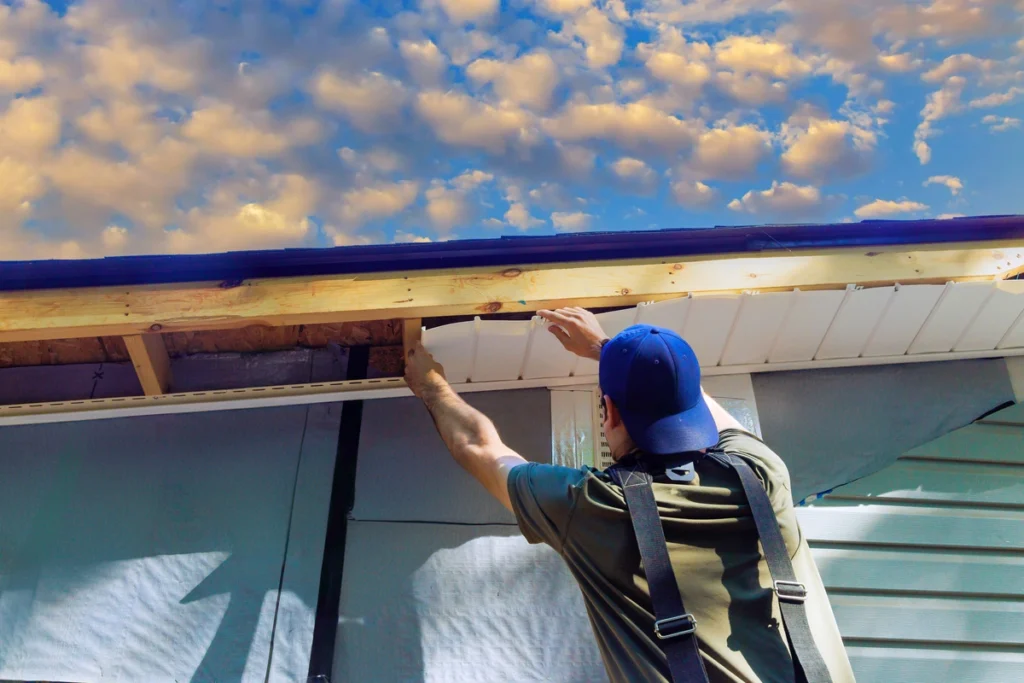
DIY is great for routine ventilation upgrades, dehumidifier setup, and basic sealing. But some situations call for professional diagnosis and fix:
- Recurring mildew despite good RH control (35%–50%).
- Uncertain ventilation paths—fans may be venting into the attic.
- Persistent basement dampness after storms or snowmelt.
- Multiple small leaks or penetrations around the building envelope.
- Ice dam history and attic condensation or staining.
For deeper basement questions, review can a handyman handle basement repairs? Then, if you’re short on time or tools, searching for handyman services near me will help you find a local expert to execute a plan quickly and correctly.
Protecting Property Value: Mildew Prevention and Your Investment
Preventing mildew is more than a cleanliness goal—it’s a long-term value strategy. Excess moisture accelerates paint failure, softens drywall, rusts fasteners, and warps flooring. Over time, buyers (and inspectors) notice musty odors, stains, and peeling finishes, which can reduce offers or slow a sale.
By documenting your RH readings, ventilation upgrades, and sealing work, you’re building a maintenance record that signals a well-cared-for property. If you plan to refinance or sell, being able to show a stable, dry basement and properly ventilated baths and kitchen supports higher perceived value and smoother inspections. When in doubt, tap trusted local handyman services near me to close any gaps before they become red flags.
FAQs: Albany Homeowner Questions on Mildew Prevention
What’s the difference between mildew and mold?
Mildew is generally a surface-level fungus that appears as powdery or speckled discoloration and wipes off with cleaning and prevention steps. Mold can be deeper and may require remediation. This article focuses on prevention measures that stop surface mildew from forming in the first place.
Do I need both an exhaust fan and a dehumidifier?
Often, yes. Fans remove moisture at the source (showers, cooking), while dehumidifiers manage ambient humidity, especially in basements. They work best together.
What RH should I target in winter?
Keep indoor RH around 35%–45% to limit window condensation and attic moisture. If windows are fogging, lower RH or increase ventilation temporarily.
How often should I re-caulk my bathroom?
Inspect quarterly and re-caulk at the first signs of cracking, pulling away, or discoloration—typically every 12–24 months depending on use and product quality.
My basement smells musty even with a dehumidifier. Now what?
Check drainage: gutters, downspout extensions, and grading away from the foundation. Seal hairline cracks and ensure the dehumidifier drains continuously. If the smell persists, have a pro inspect for hidden leaks or ventilation issues.
Is painting over mildew okay?
No. Clean and dry the area first, eliminate the moisture source, then use a moisture-resistant primer/paint. Painting over active mildew can lead to peeling and return growth.
Do vent fans really need to exhaust outdoors?
Yes. Venting into an attic can cause condensation, wood rot, and mildew above ceilings. Properly duct through a roof or wall with an insulated duct and exterior cap.
Are portable dehumidifiers enough for larger basements?
Sometimes, if sized correctly and placed well with good airflow. For big or persistently damp basements, consider higher-capacity units or multiple units, and verify drainage.
Conclusion
Proactive mildew prevention protects your home’s finishes, air quality, and long-term value. With the right mix of ventilation, dehumidification, and targeted sealing, Albany homeowners can keep humidity in check and surfaces clean. If you’d like an expert to assess your bathroom fans, basement humidity, or sealing needs, A&S Home Services is ready to help with practical, local solutions that work.
